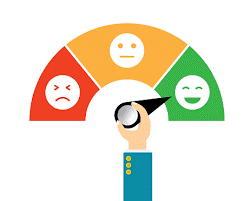How do you ensure that the experience of your customer is worthwhile and sustainable? By keeping a keen eye on the experiences you deliver at your touchpoints. The experience you offer to customers plays out regularly as they pursue your journey from inception to the final stages. Key questions to ask include: how do they feel about your service or product, where do they find you, what thinking frames they go through and how they arrive at a final decision.
These are critical to your business success and therefore deserve your full attention. The only way you can empathize with them is by keeping a close eye on the activities going on regularly as the customers engage with your brand. So for example if you run a hotel business it pays to be very focused on how customers come into contact with your brand. The processes they go through and how they finally arrive at a decision to engage your services as well as what happens after that.
The building blocks of your customer journey present some valuable insights on how to attract and maintain interest to the point of purchase and beyond. A typical journey takes the customer through several phases traversing a period of awareness, findability, reputation, conversion, and advocacy. Every point in this process is critical such that at each stage your focus must be to get the customer to complete the process and take the step to the next phase. These insights inform how you approach the design and deployment of your customer journey map (CJM).
Awareness
Never mind the technology prowess of your strategy, its impact will be minimal if your customer experience team are the only ones who know what is happening. The way to avoid this pitfall is to share customer insights throughout the organization. Sound leadership principles are what you need to get by here. Companies use varying approaches to create brand awareness. For some, a ‘Bold’ Customer Experience Champion is entrusted with the responsibility of advocating for the customer. Others formalize it by creating a logo that concentrates their customer experience strategy. Whatever the approach what is important here is where employees and leadership alike share a common language about the customer experience and the work the organization is doing to make it special.
To get your staff actively involved in the process gather feedback from the use of a ‘voice of the customer’ software. The feedback must be harnessed at the department level by giving them what relates to their functions and/or processes. Methods to employ include daily push reporting, company newsletters, pre-shift meetings client videos, email, text marketing, loyalty programmes among others. The truth is that different tactics work for different companies, the important thing is to ensure conversations around the customer be become a ‘corporate’ habit. The success criteria for creating a successful customer experience awareness mindset is for the leadership to prove that it is not a ‘nine-day’ wonder. Nobody ever said the change was easy however pacesetters have proved that it is possible.
Findability
How visible are you? How easy is it to find you? The customer journey plays out variously. They may find you through your website (not a very popular method in our ecosystem), location, or details of products and services in the type of literature. Businesses that excel in the market are the most findable. If one wants a hairdo where would she prefer to go for this service? Locally or would she travel out of her locality and rather attend one located elsewhere based on a referral by a friend? The customer is looking for the method that stands out best for them so the key is to be well-positioned so that you can easily be found. If the customer has to use an App the question would be, is it user-friendly? If the process of searching proves to be complicated you lose the competition to one who offers more accessibility and visibility.
If your branches are not easily accessible how do you ensure that your off-the-counter operations are easy enough for the average customer? If you expect people to find where your physical location is, where can they find directions or listings pointing them to your nearest location? If you get the channel right invariably your message becomes more distinct, then your consumers will have the liberty to consume the information they are looking for at the right time which may ultimately lead them to interact with your brand. Knowing the right time will influence your choice of targeting mediums such as ads, email marketing campaigns, websites, marketplaces, and social media among others.
For example, Bose decided to close all of its stores in Japan, the US, Europe, and Australia. They will now sell online and via retailers only to adapt to the change in consumer needs. It is not always necessary to have a physical presence, especially if a brand has very strong brand awareness in the market already such as Bose. Bringing it home an online presence is not entirely a given if the brand is strong enough to bring it home to the local market. I am sure many of us can identify with the strong advertising campaign of “Hisense” the brand associated with electrical appliances and gadgets.
The popular tag line of ‘ya tete so sey whoom’, forgive the poor twi spelling I hope you get the message. I have even noticed a second-hand shoe dealer borrow the tag line and it appears to be doing wonders for him. ‘Hisense shoes’ he says (in twi) using the same expression to indicate that his prices are very low … just, by the way, my point though is the effectiveness of the message in terms of how it resonates with customers. Creates visibility for the brand and makes it easy to find.
Reputation
Kwame is looking for a pair of shoes to buy for an important outing. He is very discerning, very fastidious when it comes to dressing, always likes to look good. So these days there are a range of online platforms where you can order some good stuff if you want to dress and look good. The two most common research outlets are online reviews and social media. Because he has a wide range to choose from he will carefully search online for what he thinks will be a great pair of shoes for his outing. He will spend quality time researching men’s shoes until he finds a brand he thinks will fit his taste.
He will read reviews about the products he finds to help him confirm what he thinks will be a good choice. Businesses should be aware of the online conversations that go on about their brand and the potential impact it has on the customer journey. If what shows up on online reviews is negative about the brand he will be influenced to continue searching until he finds a place where he can spend his money. As part of his journey, he will look for reviews and feedback comments on social media, he will ask a few friends with whom he may share some common interests. What will influence a good outcome for him in all cases is when the reviews are positive. Research has proven that “86% of people will hesitate to purchase from a business that has negative online reviews.” The need to work on the reputation of your brand is imperative if you want to maintain your reputation as a best-in-class brand.
Conversion
The customer is ready to purchase if the search has yielded positive results. Many businesses are gradually moving their services online offering e-Commerce purchasing solutions. Having a website makes your business visible with no geographic limits. For customers who prefer to shop in-store, a website may list different brands or products that s/he can expect to see in the store. These days it is still extremely important for local businesses to have websites even if they choose to sell their products and services in-store as opposed to online.
To keep the customer within your sights you will need to work hard at maintaining an up-to-date website with great usability. Your goal is to minimize (or eliminate) any bottlenecks to the customer’s journey. You have a range of options to make the journey as painless as possible, such as online booking; my colleague on the flight from London, a Briton who had never been to Africa found this hotel in Elimina online and was happy to book a room for his sojourn in Ghana. They in turn offered him a cocktail of services to make his stay in Ghana memorable. Kudos to this local hotel for working hard on their customer journey. It just proves that the principle works and that if you get it right, it will make you some good returns! Using apps for your banking transactions have become the norm. Is it not very convenient to cross your legs at home and just perform your financial transactions avoiding the hassle of city traffic and all the associated stressful activities such as long waits in queues (as a consequence of observing covid19 protocols) and so on.

Logitech the brand associated with computing accessories from mice and keyboards to mobile devices, streaming gadgets, and video conferencing equipment, is now offering consumers more choice and convenience along their digital path to purchase, leading to higher conversions. Investments in best-in-class technology have empowered them to manage their information thus enhancing their ability to pinpoint what marketing investment is delivering bottom-line results and boosting revenue potential, enabling them to make smarter investments in their marketing budget. It affirms the assertion that customer experience ultimately enhances your business performance. As you focus on the needs of your customer they reward you by staying loyal to your brand.
Advocacy
When a business converts a customer into paying for and acquiring a product that customer now has the opportunity to influence the customer journey for other potential customers. This will however depend on the experience. If the customer’s experience was negative s/he will share that experience with others. Permit me to blow my horn a little here. Working years ago in the UK, in the IT department of an oil company, I got this email for a job I did for a user. ‘Kodwo, You can’t imagine how nice it is to have a computer that works as it should. Thanks for a good job well done!’ Tell you what word went round about this little deed which to me by the way was just playing out my job description by helping a client. The news eventually got to my boss who graciously forwarded the email to unsuspecting me.
This client had an amazing experience with the little help I had provided by working on his machine. He shared it for everyone to see. Both reputation and the advocacy phase come together here. This man’s experience had the potential to affect the experience of many other clients. Under reputation the customer, Kwame was ready to buy until he saw a negative review. His reaction was to find another business that won’t let him down so he forgot the sale at one business and converted the sale to another.
A customer journey is simply a story about understanding your customers, how they behave while they engage with your brand, and what you can do to improve their experience, so they keep coming back. Using a customer journey map to analyze customer behaviour helps your organization understand how they journey through your touchpoints and how they feel during their time there. There are two major benefits for any business, your decision-makers stay focused on customers, and it helps make each step of the buying experience easier for potential leads. The journey map helps you signpost your customers in the five ways discussed in this piece. First, you make it easy for customers to find out about your business (awareness). Second, you make it easy for them to find your business (findability). Third, you make it easy for customers to trust your business (reputation). Fourth, you make it easy for them to get what they are looking for (conversion) and fifth, you make it an experience that they would want to share with others.
The Writer is the Managing Consultant at Capability Trust Limited a People and Learning Organisation serving the market with Talent Acquisition and Management, Leadership Development, HR Outsourcing, and General HR Advisory, Training, and consulting services. He can be reached on 059 175 7205, [email protected]/ www.linkedin.com/in/km-13b85717










